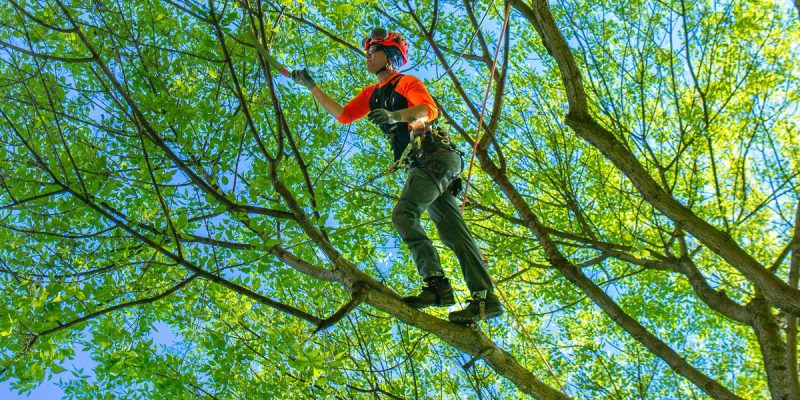Tree pruning is often spoken of as a technical task, but in truth it is a story about the relationship between people and their environment. Each cut made to a branch alters not only the shape of the tree but the rhythm of the community around it. In Singapore, where green landscapes stand shoulder to shoulder with glass towers, pruning is more than maintenance; it is a necessity for safety, order, and beauty.
Why Tree Pruning Matters
Trees do not grow in silence. They push against pavements, lean over roads, and stretch into power lines. Without proper care, they become hazards rather than assets. Pruning serves as both discipline and preservation.
- Encourages healthy growth by removing dead or diseased branches
- Reduces risks of falling limbs in storms
- Enhances the tree’s shape and appearance
- Improves air circulation within the canopy
- Allows more sunlight to reach surrounding plants
A resident in Singapore put it plainly after a community project, “We thought the pruning was just for looks, but it kept branches from blocking the street lights. Safety came with beauty.”
The Science Behind Pruning
Pruning is not guesswork. It is an applied science, drawing upon knowledge of tree biology, growth patterns, and wound recovery. A poorly made cut may expose the tree to infection, while a well-placed one allows healing and renewed strength.
- Crown thinning: Selective removal to reduce weight and allow more light.
- Crown raising: Lifting the canopy to clear space for pedestrians and vehicles.
- Crown reduction: Shortening branches to prevent interference with structures.
In Singapore, where storms sweep in suddenly, such practices are essential to ensure that roadside trees do not endanger lives.
Tree Pruning in Singapore’s Climate
The tropical climate is both a gift and a challenge. Trees here grow vigorously year-round, but they also suffer under heavy rainfall, humidity, and winds. Left unchecked, branches can quickly become overgrown, blocking drains or falling during storms.
One municipal officer described it best: “Pruning in Singapore isn’t optional. The weather makes trees thrive, but it also makes them unpredictable.”
Thus, regular and skilled pruning is woven into the fabric of urban management, ensuring greenery coexists safely with dense human settlement.
When to Prune Your Trees
Timing shapes outcome. Pruning at the wrong moment can shock a tree or reduce its flowering potential.
- Dormant season: Best for structural pruning and heavy cuts.
- After flowering: For species that bloom, pruning after flowering protects the cycle.
- During growth: Light pruning can control shape and remove hazards.
In Singapore’s equatorial climate, growth is constant, so the emphasis is on frequent light pruning rather than drastic seasonal cuts.
The Risks of Neglecting Pruning
Neglect is costly. Branches left untrimmed may split under their own weight, roots may damage pavements, and canopies may hide dangers from view.
- Overhanging branches interfere with roads and power lines
- Dense foliage increases risk of pests and disease
- Fallen branches cause property damage and injuries
For urban spaces, neglect is not just unsightly—it becomes a civic liability.
The Benefits Beyond Safety
Though safety is paramount, pruning shapes lives in other ways. Walk through a street where tree pruned, and you notice the order. Light filters evenly, paths feel open, and the greenery appears deliberate rather than chaotic.
- Creates aesthetically pleasing streets and parks
- Extends the lifespan of trees
- Supports healthier ecosystems around the tree
- Reduces long-term maintenance costs
As one gardener in Singapore observed, “It is like editing a story. You take away what distracts, and the meaning becomes clearer.”
DIY Versus Professional Pruning
Some homeowners attempt their own pruning, particularly with small trees. Yet, when branches grow thick and high, or when the tree sits close to roads and structures, professional expertise is not a luxury but a necessity.
Professionals bring:
- Knowledge of proper cutting techniques
- Equipment for safe work at height
- Awareness of local regulations on urban trees
DIY pruning may suffice for minor touch-ups, but larger tasks demand skill to avoid damage both to the tree and to people nearby.
Sustainable Pruning Practices
In a world where every action shapes the environment, sustainable pruning matters. Waste branches can be mulched rather than discarded. Cuts should be made to promote long-term vitality, not quick cosmetic fixes. In Singapore, where green policy aligns with broader sustainability goals, pruning plays its part in creating an urban forest that endures.
How to Choose the Right Tree Pruning Service
Selecting the right service is much like selecting a trusted witness to history: their work shapes what survives and what fades.
- Look for proven experience in tropical conditions
- Ask about safety standards and insurance coverage
- Ensure practices align with ecological sustainability
- Seek clarity in communication and cost
The right choice ensures not only neat branches but also a thriving tree, capable of standing strong for years to come.
Conclusion
Tree pruning is both art and necessity, a way of guiding growth and protecting life. In Singapore’s dense and tropical environment, the discipline ensures that trees remain companions rather than threats. To prune is to respect both nature and society, cutting away excess so that harmony may emerge. For every driver passing a shaded avenue, for every child playing beneath an open canopy, the quiet work of pruning has already shaped the experience. In the end, urban order and natural beauty both rely upon the steady practice of tree pruning.

Comments